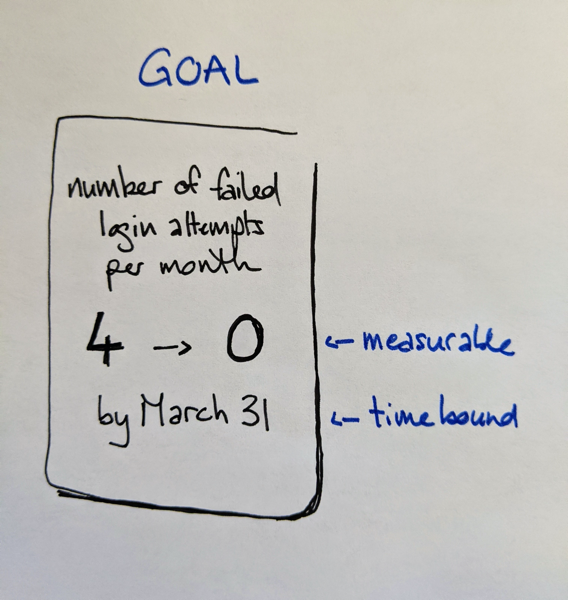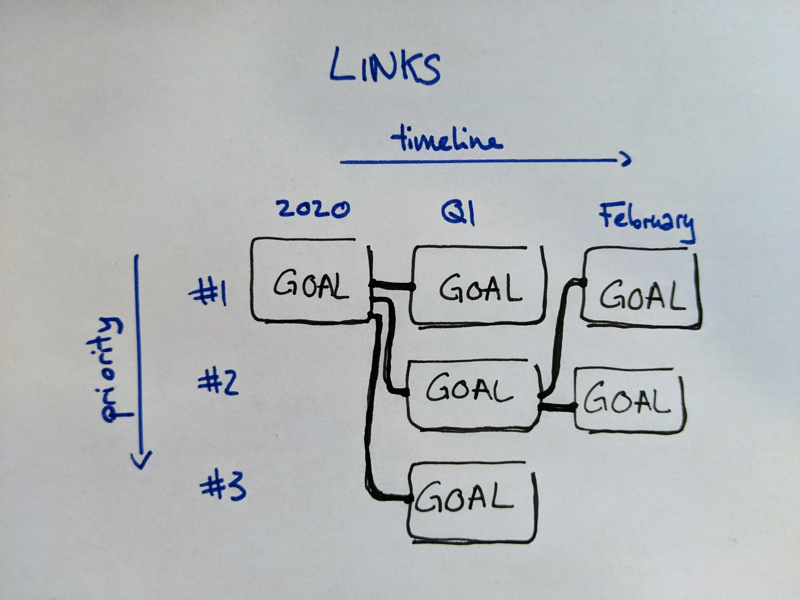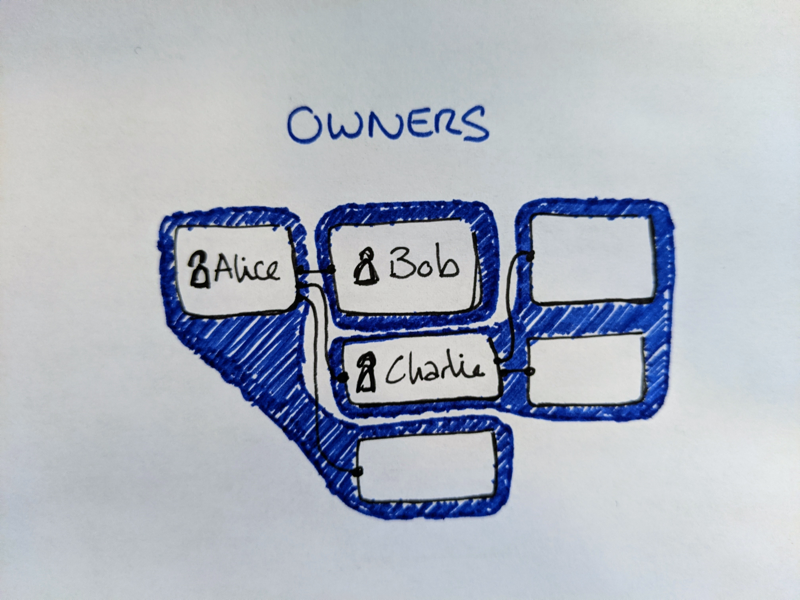HOW TO MANAGE PRODUCT
- by Georges Duverger
- I believe the raison d'être of Product teams is to put good intentions to work. PMs (Product Managers) shouldn't just write requirements; they should define, execute, and validate the strategy of the company (see What is Product Management?). To do so, they need goals, links, and owners.
Timebound, measurable goals
- Product teams create lots of artifacts: the company's mission, OKRs, roadmap, Epics, etc.
- All those documents have one thing in common: they represent tasks that employees need to complete, a.k.a., goals. The problem with goals is that they tend to be open to interpretations and not actionable enough. Instead, they should be timebound and measurable.

Prioritized links
- The aforementioned artifacts (OKRs, roadmap, etc.) are also disconnected.
- It's often unclear to PMs how their projects fit in the big picture. Similarly, engineers are frequently wondering how the features they are implementing improve the bottom line.
- Goals that are tied together in order of priorities form the strategy of the company. They align teams, help evaluate trade-offs, and make it easier to respond to change when new requests or opportunities come in.

Inherited ownership
- Micromanagement often comes from a lack of confidence in an employee's ability to come up with an appropriate solution. By abstracting that solution and reviewing a measurable goal instead, employees gain more autonomy and space to innovate (see Elevate and Delegate).

- From a manager's point of view, the way to guide the appropriateness of its employees is by carefully defining the company's mission and values, but that's another discussion entirely.
- Made in Arlington, MA. Generated with Ivy. Styled with Backslash. All emojis designed by OpenMoji – the open-source emoji and icon project. License: CC BY-SA 4.0





